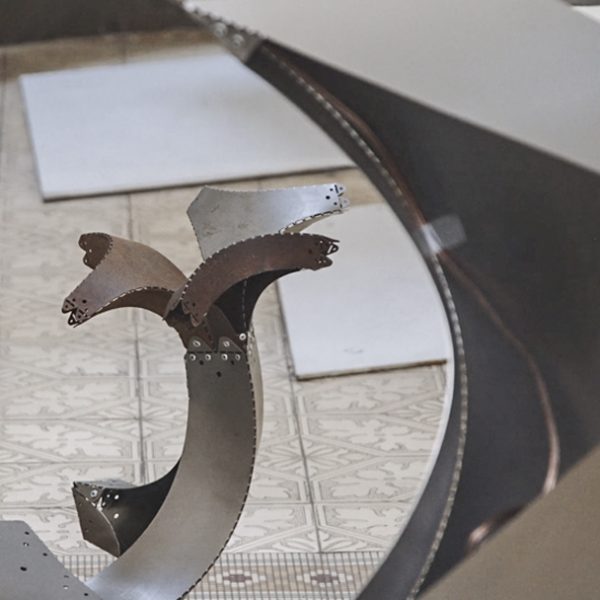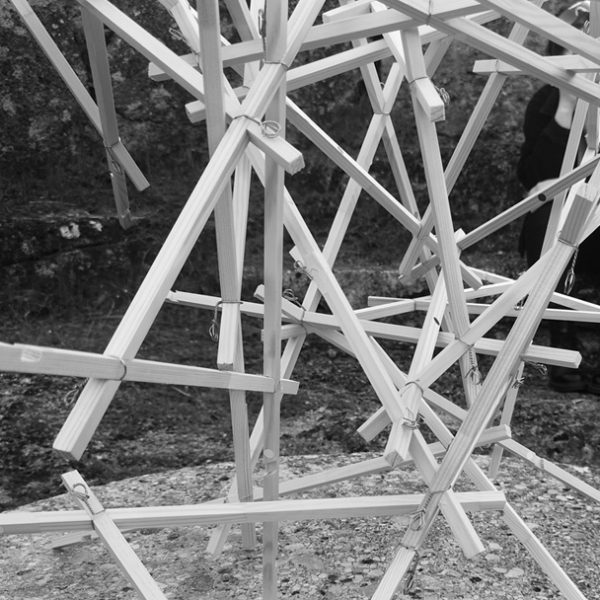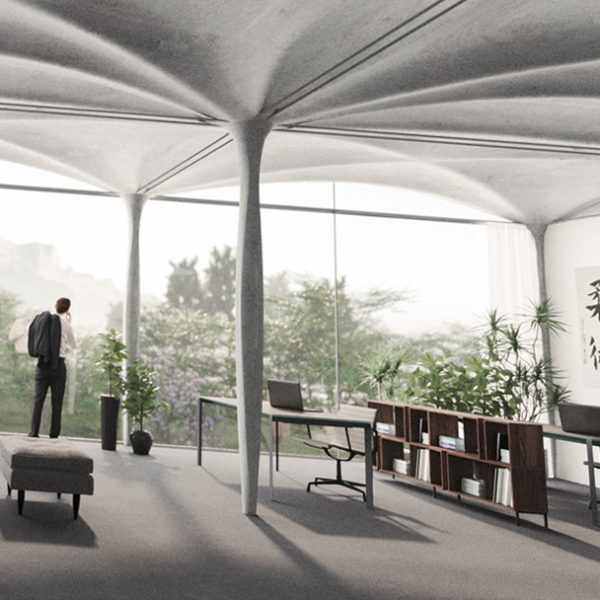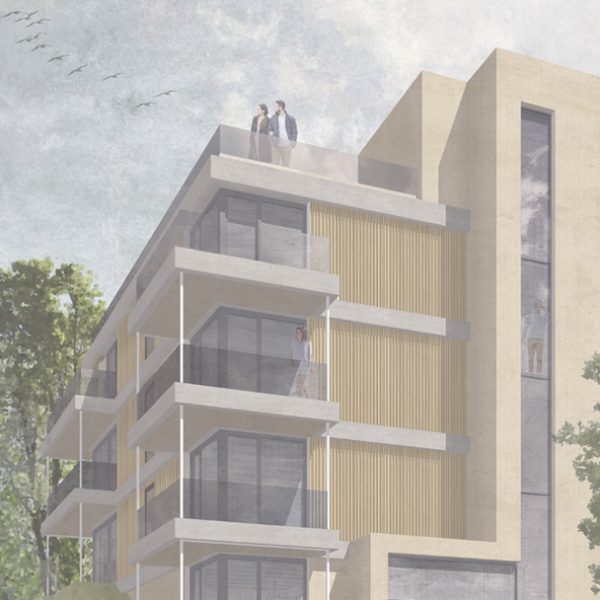Information on Theses and Dissertations
In terms of research-led teaching, the ITI is aimed at interested students of architecture and civil engineering who would like to deal with current research as part of their Bachelor's or Master's thesis.
For Master's theses, further investigations are planned depending on the scope of the work.
Dealing with existing buildings & new construction | Sustainable design | Strategies for cost-effective and resource-conserving housing construction
Dealing with existing buildings & new construction | Sustainable design | Strategies for cost-effective and resource-conserving housing construction
The following theses (design theses) are available as part of design-orientated research:
- - Sustainable building with regional hybrid systems
- - Sustainable building in timber (hybrid) construction
- - Sustainable building with brick-wood hybrids
- - Sustainable building with brick
- - Sustainable building with steel (hybrid) construction
- - Sustainable building with concrete (prefabricated elements)
Among other things, the topics of "space efficiency through construction type", "flexibility of use and conversion", "energy efficiency", "energy flexibility through thermal component activation", "non-destructive recoverability", the aspects of the circular economy, reuse, recycling, re-use and re-utilisation must be dealt with in detail.
The design criteria must be clearly defined at the beginning (e.g. ecological and economic aspects; energy-efficient building concepts; material-appropriate design; life cycle cost-conscious planning and construction; system construction ...).
Methodology
Research (state of the art) for strategic planning with selected variants, definition of measures far beyond the state of the art, analysis of the built objects e.g. through a SWOT analysis [Strengths, Weaknesses, Opportunities and Threats]; interviews, surveys, own design ...
Target group: Students of the Master's programmes in Architecture and Civil Engineering
Start: immediately
Duration: 4 to a maximum of 6 months
Supervision: Associate Professor Dr. Alireza Fadai
---
Resource-efficient planning | Reduce, Reuse, Recycle
Today, the construction industry is required to achieve greater resource efficiency and improved environmental compatibility of the raw materials and processing techniques used.
Objective:
The main focus of the thesis is on a life cycle analysis (deconstructability, reuse of components, separability, recycling, resource-saving dismantling)!
Working through a realisable planning concept, taking into account the efficiency of the materials.
Planning with reclaimed materials in a planning, procurement and construction process
Task of the diploma thesis (design work):
- Research (state of the art) for strategic planning with selected variants, definition of measures far beyond the state of the art,.
- The optimisation criteria must be defined (reduction of material consumption, production costs, construction time, maintenance, disposal, etc.).
- Analysis of the built objects, e.g. through a SWOT analysis [Strengths, Weaknesses, Opportunities and Threats]; development of recyclable components and building systems (e.g. using a plug-in system), optimisation of the components and their production (e.g. separation by type); evaluation of the efficiency of the developed components.
- Interviews, surveys, own design ...
Target group: Students of the Master's programmes in Architecture and Civil Engineering
Start: immediately
Duration: 4 to a maximum of 6 months
Supervision: Associate Professor Dr. Alireza Fadai
---
Resource-efficient planning | Development of plug-in systems in hybrid timber construction
Today, the building industry is required to achieve greater resource efficiency and improved environmental compatibility of the raw materials and processing techniques used.
As part of the diploma thesis (design work), load-bearing components in timber hybrid construction are being developed for dense construction in urban areas and their practical use optimised.
The possibility of fast, precise and weather-independent assembly speaks in favour of such hybrid elements, which should meet all static and building physics requirements and thus be ecologically and economically superior to today's conventional construction methods.
In addition to taking into account the modern production and application possibilities of wood raw materials, composite techniques and mixed construction solutions are to be investigated using lightweight concrete and glass in particular.
Objective:
The main focus of the thesis is on a life cycle approach (resource-saving dismantling and reuse) and simple connection of module units to each other in order to make them quick to dismantle and reassemble.
Practical dismantlability and legal and liability-related reusability of fasteners and components
Working through a realisable planning concept, taking into account the efficiency of the materials.
Task:
- Research the state of the art with regard to previous research and realisation projects as well as the calculation methods for hybrid elements.
- Examine the materials wood, lightweight concrete, glass and the connecting materials adhesive and screws.
- Conceptual development
- Detail development from a building physics and timber construction perspective
- Realisation; case studies
- Ecological evaluation
- Thermal evaluation
- Conclusions for practice
Target group: Students of the Master's programmes in Architecture and Civil Engineering
Start: immediately
Duration: 4 to a maximum of 6 months
Supervision: Associate Professor Dr. Alireza Fadai
---
Resource-efficient structural design
Today, the construction industry is required to achieve greater resource efficiency and improved environmental compatibility of the raw materials and processing techniques used.
As part of the diploma thesis, scenarios are to be developed in which the problems of future developments are visualised and solutions are found.
Objective:
The aim of the diploma thesis (design work) is to build with added value and to reflect on the origin of energy and materials and their careful use. It is about structural measures for the preservation and adaptation of existing buildings as well as demolition and new construction. The focus is on property planning, however, with decisive consideration of the expected changes in functional requirements.
Working through a realisable planning concept, taking into account the efficiency of the load-bearing systems and materials.
Easy-to-use approximation approaches are to be developed for the user to assess the efficiency of the components.
Task:
- Research the state of the art with regard to the technical diversity of commercially available construction systems.
- Systematically analyse the environmental impact of products and evaluate the load-bearing elements
- In addition to a comparative life cycle assessment, the masses, costs and construction times of various systems are compared with each other and the advantages of individual construction methods are worked out.
- Evaluation of the efficiency of the components through the relationship between load-bearing capacity and costs as well as comparative sustainability values
- Development of flexible, recyclable building systems using hybrid construction methods
- Optimisation of the new products and their manufacture
- Architectural analysis of new load-bearing elements (details etc.)
Target group: Students of the Master's programmes in Architecture and Civil Engineering
Start: immediately
Duration: 4 to a maximum of 6 months
Supervision: Associate Professor Dr. Alireza Fadai
---
Holistic design of timber-concrete composite components according to ONR CEN/TS 19103
As part of the diploma thesis (design work), timber-concrete composite components are developed and their practical use optimised.
Objective:
The technical specification ONR CEN/TS 19103 as the basis for a future Part 3 of EN 1995 contains basic design rules for many types of timber-concrete composite components and requirements for building materials, design parameters, connections, structural design and the execution of timber-concrete composite components.
It deals with the design of timber-concrete composite components under both quasi-constant and variable environmental conditions. To simplify the application, the document contains design rules for quasi-constant environmental conditions as well as more complex rules for variable environmental conditions.
The main focus of the diploma thesis is an evaluation of the calculation methods of ONR CEN/TS 19103 with special consideration of long-term influences (shrinkage, creep ...).
Task:
1. research the state of the art with regard to the calculation methods for timber-concrete composite components.
2. to deal with the materials wood, concrete (normal, lightweight, fibre concrete ...) and the fasteners.
3. investigation and modelling of the load-bearing behaviour of timber-concrete composite components under short and long-term loading according to ONR CEN/TS 19103 and comparison with other calculation methods (FE, shear analogy method, truss models ...).
4. conclusions for practice; derivation of factors that enable the safe calculation, design and application of these wood-concrete composite components.
Target group: Students of the Master's programmes in Civil Engineering
Start: immediately
Duration: 4 to a maximum of 6 months
Supervision: Associate Professor Dr. Alireza Fadai
---
Comparison of Japanese and European timber construction measurement
In co-operation with STEXON GmbH, the Japanese evaluation method is to be applied using the example of tests carried out and differences highlighted!
It is to be investigated whether the European and Japanese tests could be mutually recognised.
Objective:
Comparison of Japanese and European timber construction measurements with regard to statically relevant topics for an exemplary fastener
- Construction Products Regulation (OIB Guidelines) - Japan. Building Code
- Harmonised product standard EN14592, due to lack of applicable harmonised standard Focus on EAD 13086-00-0603 (Technical Reports) of EOTA - Japanese approval document
- Test standards & evaluation of characteristic values - Assessment in Japan
Load-bearing capacity, serviceability (stiffness) and much more important in Japan is ductility (not assessed as standard in Europe)
Influences due to test method and dimensioning
- Assessment in Japan / determination of characteristic values (EN14358);
Explain influencing factors such as n, scattering of test values, ...)
- Basic requirements, which type of wood is representative and is tested in Europe (C24, is a wood-based material sufficient...)
- Example of pin-shaped fasteners: in Europe only basic parameters are determined, in Japan, however, primarily joints are tested = significantly increased testing/approval effort
Target group: Students of the Master's programmes in Civil Engineering
Start: immediately
Duration: 4 to a maximum of 6 months
Supervision: Associate Professor Dr Alireza Fadai



